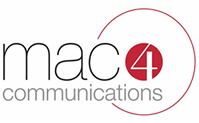
This post is the second installment in a two-part series. See Four Reasons Why It’s Worth Investing in Graphic Design .
If you’re a leader or manager who has decided to invest in professional graphic design, kudos to you. (If you’re not yet convinced, see the first post in this series, Four Reasons Why It’s Worth Investing in Graphic Design.) Once you’ve made the decision to allot budget dollars for graphic design, you might be wondering how to gain the most business value from your investment. Simply making your documents look nicer isn’t a bad idea. But is “pretty” what you’re going for? Or are you really looking for “powerful?”
By taking a smart approach to managing your design effort, you can turn graphic design into more than a pretty face for your documents. The tips below will put you on your way to working with a graphic designer or art team to deliver powerful, effective communications that support your business objectives and reinforce your message and brand.
- Look at the bigger picture. A seasoned graphic designer or team can examine the overall “look and feel” your organization is projecting to its stakeholders, and make recommendations for improvements that will give you the biggest bang for your buck. Maybe your brand is lackluster, or it’s inconsistent across markets or business units. A professional designer can give you a cohesive new look and feel across the board, and they can ensure you are following your company’s branding standards, too, which might be a better investment than graphically enhancing documents one by one. Especially if your budget is limited, consider having a designer create corporate graphic standards or templates that you can use and reuse to project a consistent image that promotes your brand.
- Prioritize based on business value. No organization has the time or money to graphically enhance all of its communications, so be strategic and selective. Use your business goals as a guide. Reintroducing your brand? Invest in design for some key “flagship” communication pieces that will represent the new face of your company in an attention-getting way. Making a significant change within your organization? Use design to communicate the change to employees in a clear, fresh and engaging way. Communications are most powerful when they’re aligned with your business objectives, and that’s where the return on your design investment is greatest.
Give specific and clear art direction, making sure that you know and clearly communicate to your designer the answers to some key questions:
- What is the business objective of the document or design project? What do you want people to think, feel and do in response to this communication?
- Who is the audience for the communication, and how will they interact with it (i.e., in-person or self-running presentation, download to read independently, etc.)?
- Are there corporate graphic standards (including templates, colors, fonts, logos and image banks) the communication must follow to support the company’s brand?
- What specific design elements are needed to convey your message? If the new logo needs to be more contemporary, or the photos in your PowerPoint must appeal to engineers, be sure to impart this invaluable knowledge to your design team.
- If there are a few different possible design directions, have the designer provide you with partial mock-ups of a few possible styles to choose from. That way, you avoid investing a lot of design time in an approach that doesn’t work for you.
With the right approach to managing graphic design, you can make sure your design budget is money well spent and that the results are not just pretty—but powerful.
Author: Kate Tomasco

